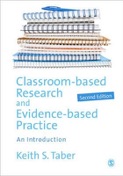Educational Research Methods

A site to support teaching and learning...

Hierarchical focusing
This is a procedure used in interviews to avoid leading respondents by initially asking questions as open as possible, but ensuring information is not missed because respondents do not think to include it in their responses.
* Use open-ended questions to allow the informant to offer their perceptions, based on their organisation of the topic (and so indicating their priorities)
* Then invite comment on particular issues of interest omitted from initial response
* Repeat in cycles - working from more general to more specific
“Carry out and explicitly portray an analysis of the content and hierarchical structure of the domain in question as you, the researcher, construe it.
Visually portray a hierarchical agenda of questions to tap these aspects and elements in a way that allows gradual progression from open to closed framing, combining this as appropriate with contextual focusing. Include with this question hierarchy a skeleton of the same structure for use as a guide and record.” (Tomlinson, 1989: 162).
“The strategy of hierarchical focusing is proposed as a systematic approach … to the design, conduct and analysis of interviews” (Tomlinson, 1989: 155)
…explicitly portray an analysis of the content and hierarchical structure of the domain….• Visually portray a hierarchical agenda of questions to tap these aspects and elements in a way that allows gradual progression from open to closed framing… (Tomlinson, 1989: 162)
Tomlinson, P. (1989). Having it both ways: hierarchical focusing as research interview method. British Educational Research Journal, 15(2), 155-176.
An element of hierarchical focusing can be seen in this description of an interview procedure:
“During the interviews, students were asked to describe the phenomena and to explain what was happening. The canonical explanations for these phenomena taught in school and college chemistry relate to the interactions (forces, bonds) between different molecules and ions, and the relative arrangements and motions of these quanticles. This leads to emergent behavior—such as the color of a dye spreading through a liquid. What is observed is a spreading-out of color—not the movements and interactions of the quanticles. When students did not spontaneously make any reference to particles in their explanation, they were then specifically asked to think about particles.” [cf. hierarchical focusing] (Taber & García Franco, 2010:106-107)
Taber, K. S., & García Franco, A. (2010). Learning processes in chemistry: Drawing upon cognitive resources to learn about the particulate structure of matter. Journal of the Learning Sciences, 19(1), 99-142.
This is a personal site of Keith S. Taber to support teaching of educational research methods.
(Dr Keith Taber is Professor of Science Education at the University of Cambridge.)
2016
